Discover the historic places of some of Charleston’s most memorable women and men. Learn more about the Heyward-Washington House, home of the Grimke sisters and the Florence Crittenton Home for young mothers.
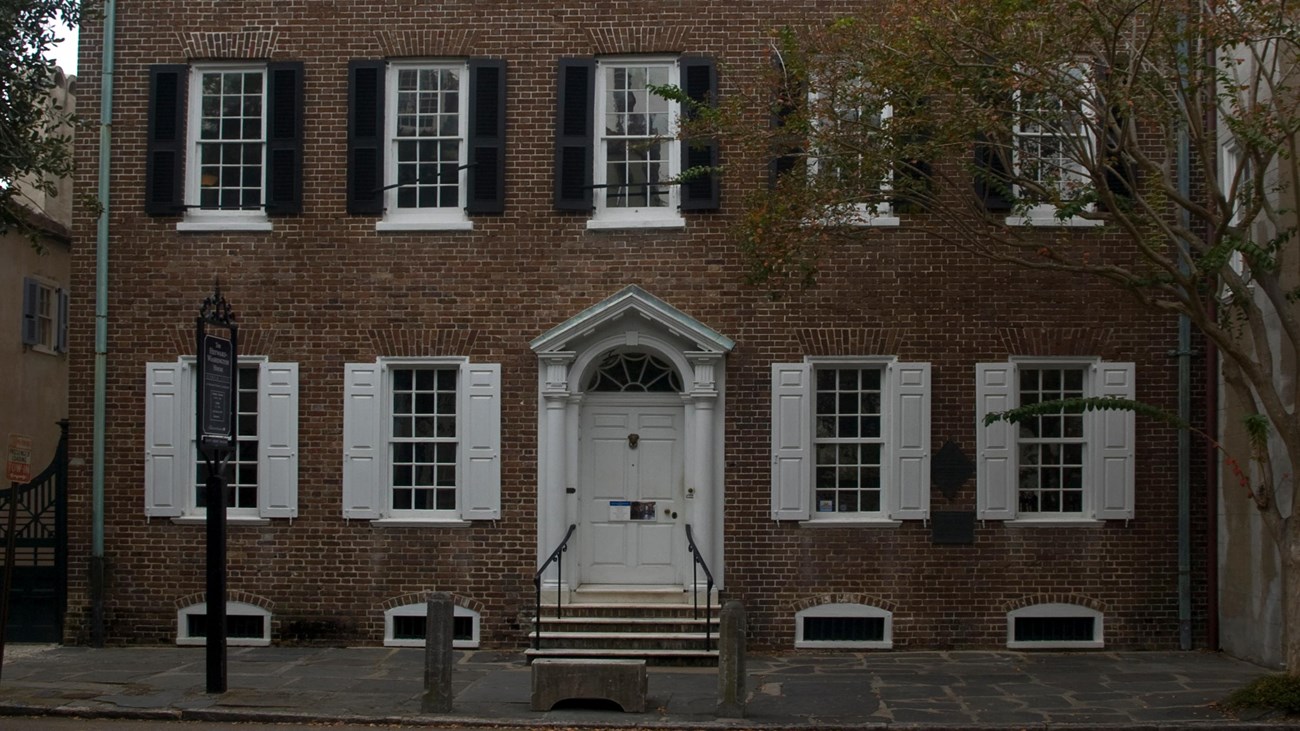
Constructed in the early 1770s, the Heyward-Washington House was the home of Thomas Heyward Jr, a signer of the Declaration of Independence.
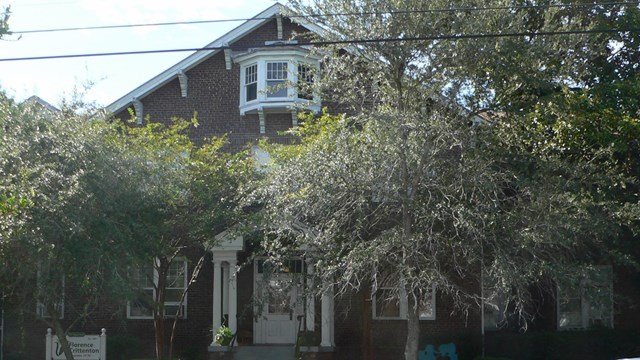
Built between 1924 and 1932, the Florence Crittenton Home in Charleston was part of the larger National Florence Crittenton Mission.
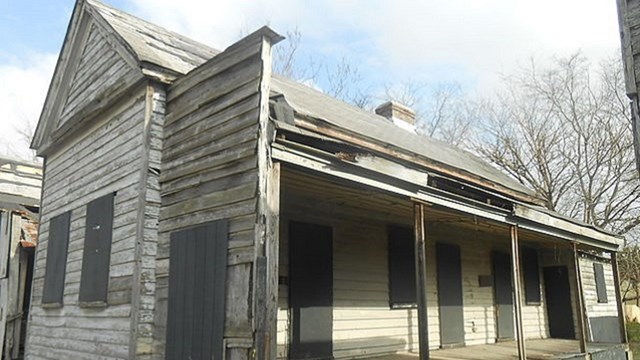
These structures were built in the 1890s to meet the city’s increasing demand for housing.
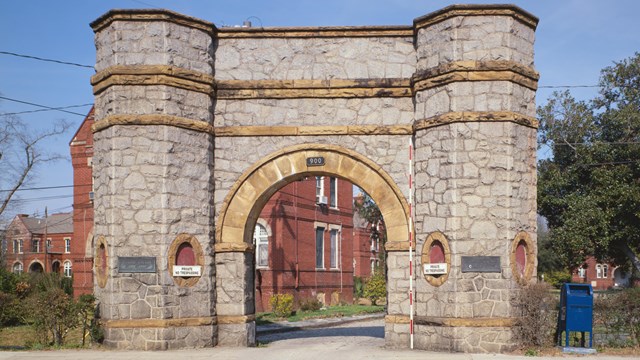
A late-19th century example of a planned community for the elderly, the William Enston Home is composted of 24 residential cottages.
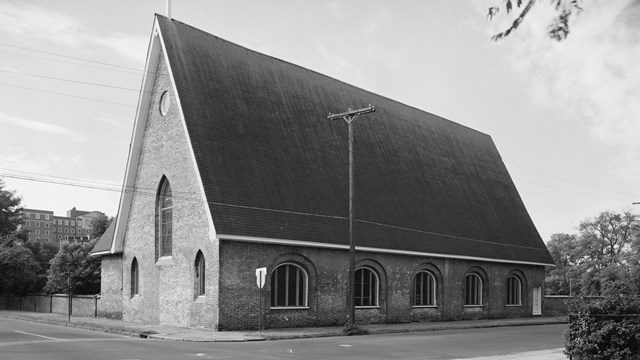
In 1825, the Federal government acquired land for a new US Arsenal which was later used as an academy to educate former soldiers and boys.
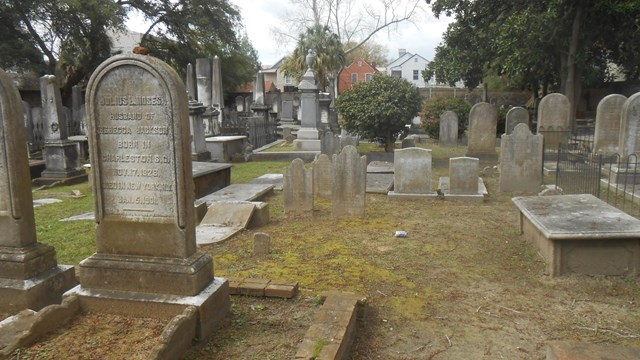
The Coming Street Cemetery, established in 1762, is the oldest Jewish burial ground in the South.
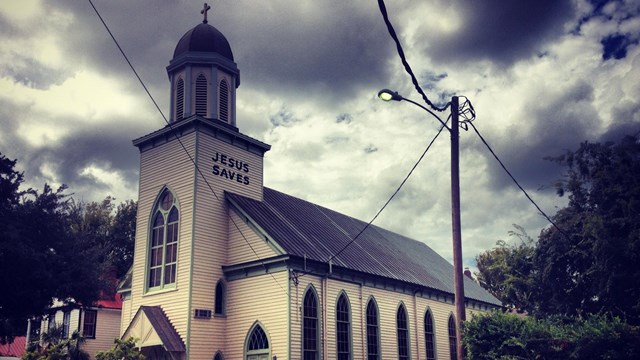
Central Baptist Church is thought to be one of the first black churches founded and built solely by African Americans in Charleston.
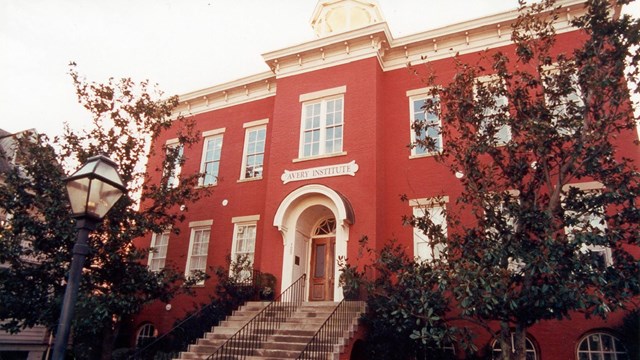
Constructed in 1867 to 1868, the Avery Normal Institute was Charleston's first free secondary school for African Americans.
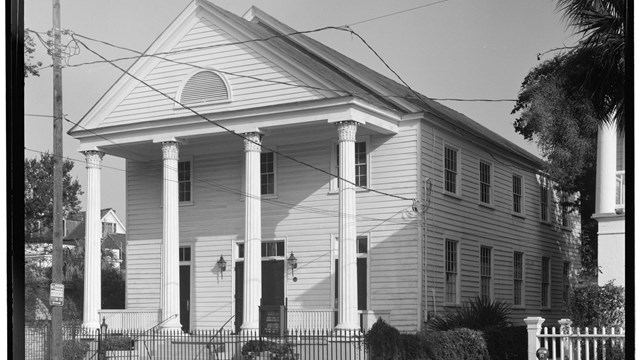
Old Bethel United Methodist Church is the third oldest church building surviving in Charleston.
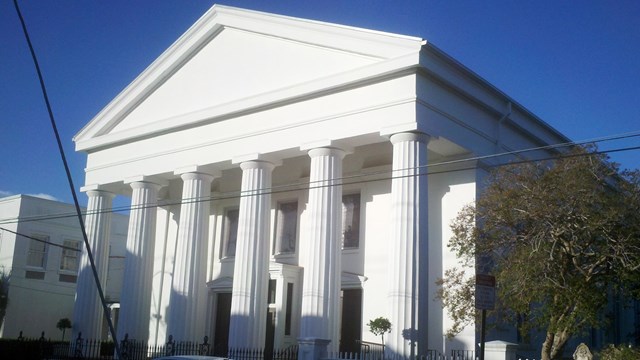
The first Methodist congregation in Charleston purchased this parcel of land in 1795.
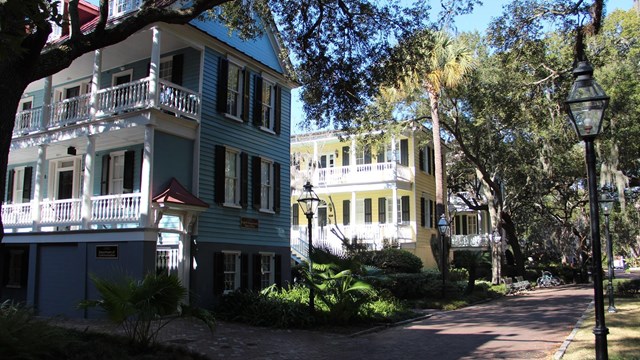
Founded in 1770, the College of Charleston is the oldest municipal college in the United States, and a National Historic Landmark.
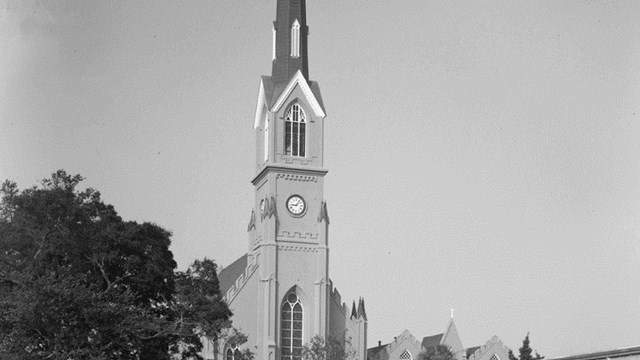
Patterned after typical German Gothic churches, St. Matthew's German Lutheran Church is a Gothic Revival church constructed in 1867.
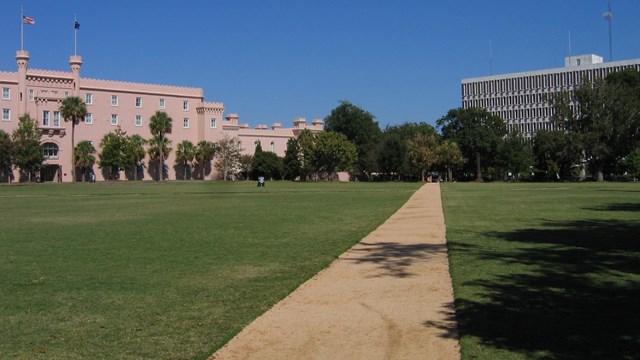
Formerly known as the Citadel Green, Marion Square is a 10 acre rectangular plot of land that was conveyed to the colony of South Carolina.
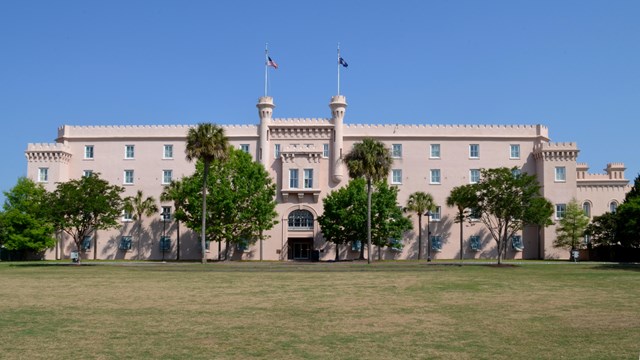
The South Carolina State Arsenal, also known as the Old Citadel, is best known for its association with the Civil War and Reconstruction.
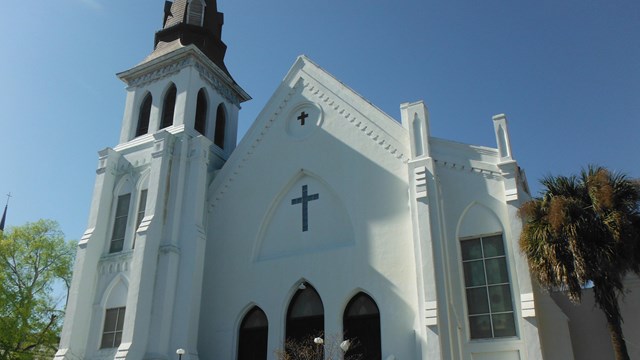
The Emanuel African Methodist Episcopal (AME) Church, built in 1891, still retains its original altar, communion rail, pews, and more.
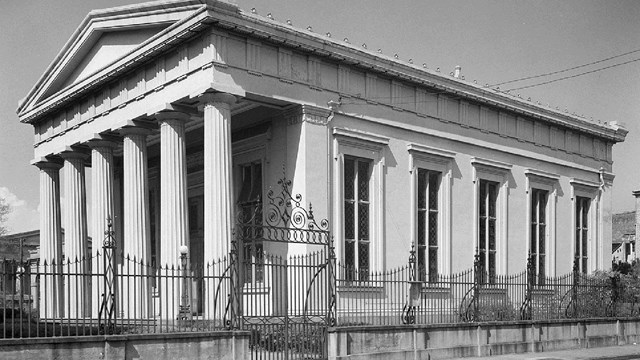
Kahal Kadosh Beth Elohim Synagogue, a National Historic Landmark, is the country's second oldest synagogue and the oldest in continuous use.
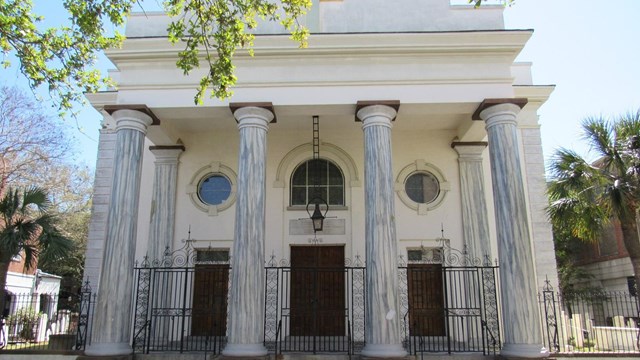
The congregation of St. Mary's was the first Roman Catholic Church in the Carolinas and Georgia.
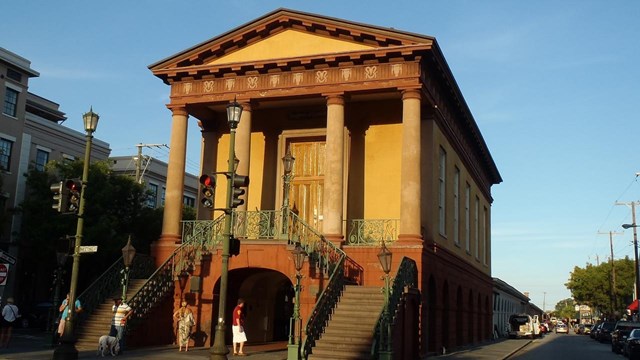
Market Hall is the only surviving market structure in Charleston, and one of only a few market complexes still extant in the US.
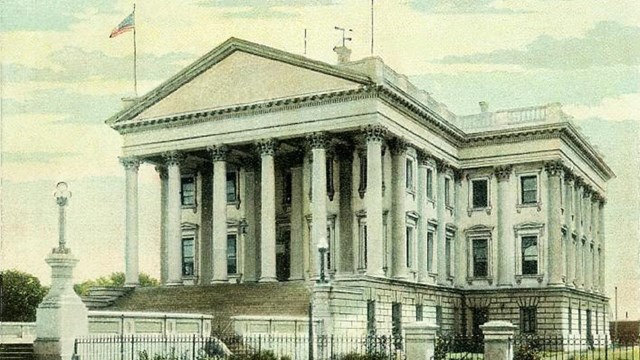
Majestically overlooking East Bay Street and the harbor, the United States Custom House is one of the most striking buildings in Charleston.
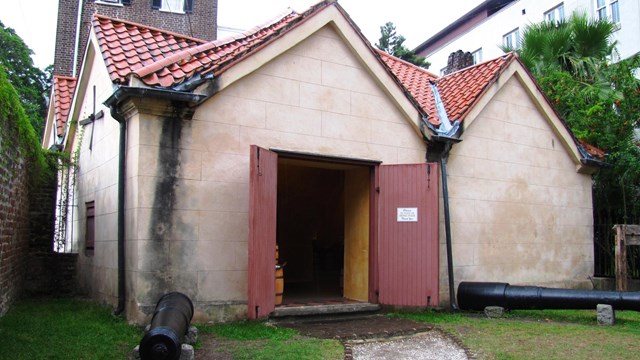
A National Historic Landmark, the Powder Magazine is the oldest public building in South Carolina, and reflects Charleston's early history.

The Circular Congregational Church is one of the few examples in Charleston of the adaptation of the Romanesque style.
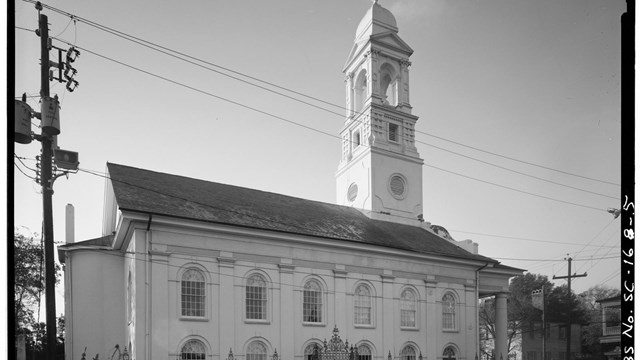
Built from 1816 to 1818, St. John's Lutheran Church houses Charleston's oldest Lutheran congregation.
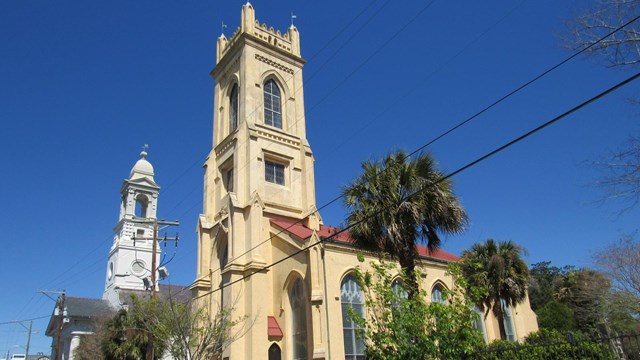
The Unitarian Church, a National Historic Landmark, is the oldest Unitarian church in the South.

The Old Jail building served as the Charleston County Jail from its construction in 1802 until 1939.
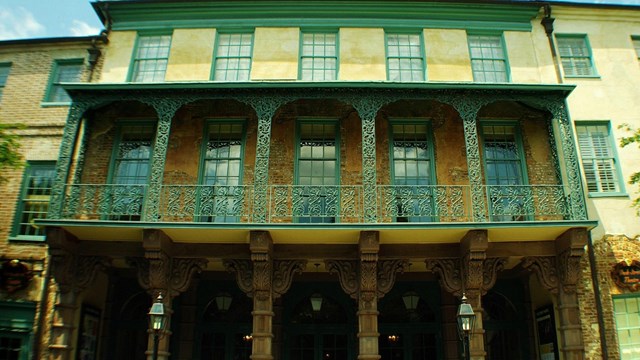
The Dock Street Theatre is Charleston's last surviving hotel from the antebellum period.

St. Michael's Episcopal Church is one of the finest Colonial American churches in the country and the oldest church in Charleston.

Completed in 1845, the French Huguenot Church is the third church to be constructed on this site.

The Fireproof Building was the most fire protected building at the time of its construction in 1827.
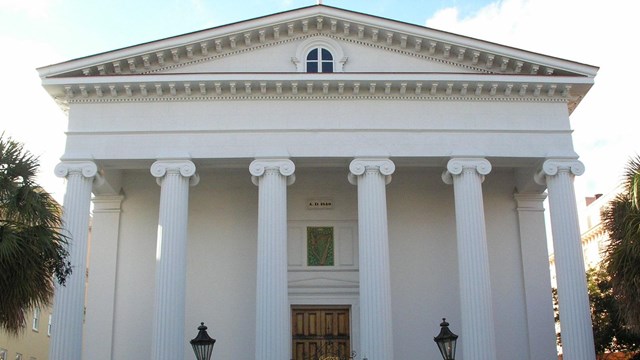
Hibernian Hall was built in 1840 to provide a meeting place for the Hibernian Society, an Irish benevolent organization founded in 1801.
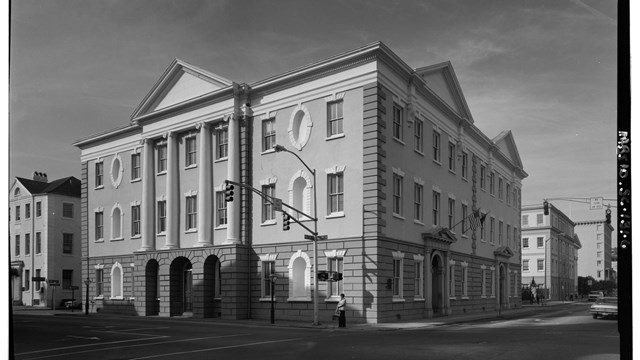
The Charleston County Courthouse was first built in 1753 as the provincial capitol for the colony of South Carolina.
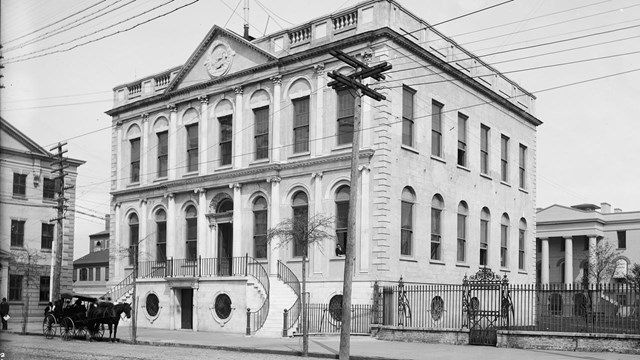
Charleston City Hall was constructed between 1800 and 1804 in the Adamesque style.
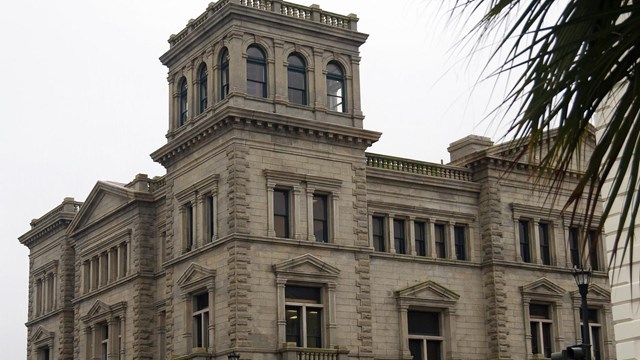
The United States Post Office and Courthouse was built in 1896 and designed by local architect John Henry Deveraux.
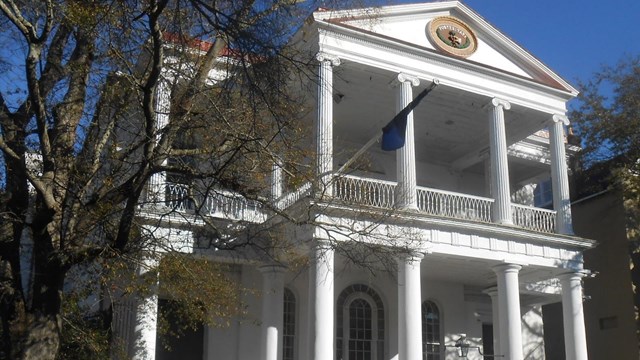
The South Carolina Society Hall is considered one of Charleston's most valuable Adamesque buildings.
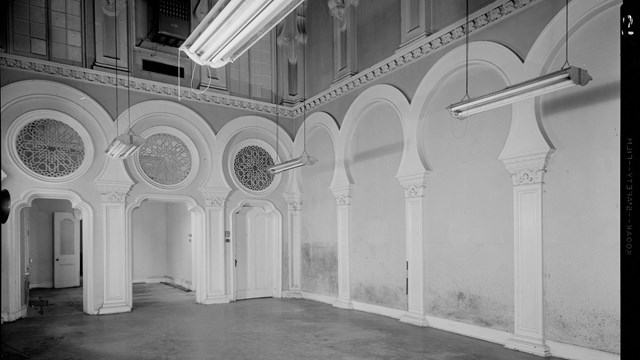
The Farmers and Exchange Bank, designed by Edward D. Jones and Francis D. Lee, was built in 1854.
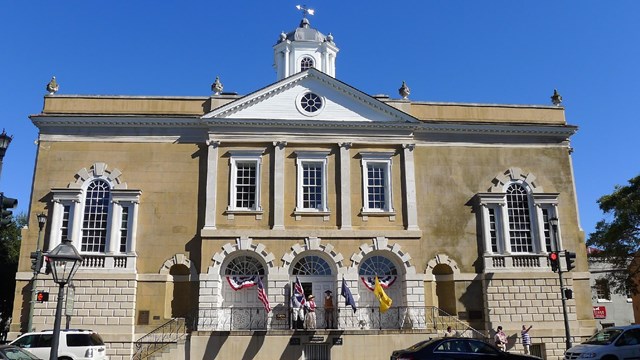
Many significant events of the American Revolution and early Federal period occurred at the Exchange and Provost Building.
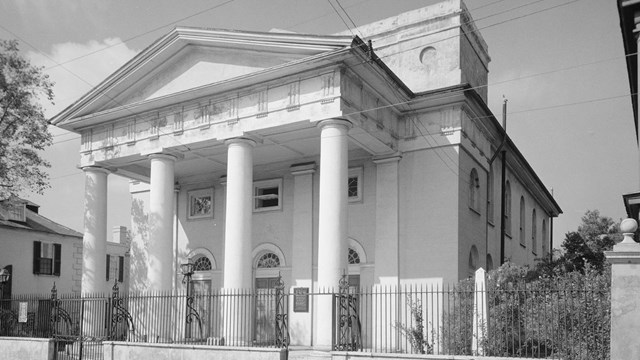
First Baptist Church, often referred to as the "Mother Church of Southern Baptists," is the oldest Baptist Church in the South.
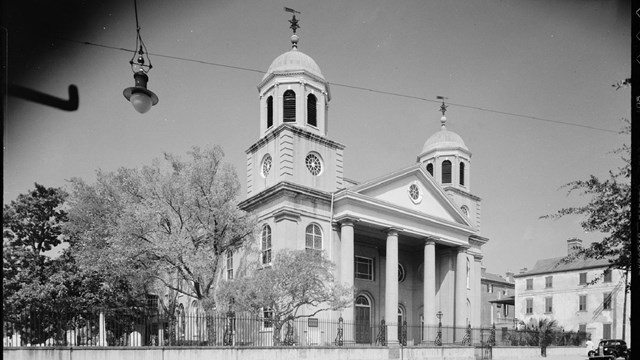
First Scots Presbyterian Church, the fifth oldest church in Charleston, was constructed in 1814.
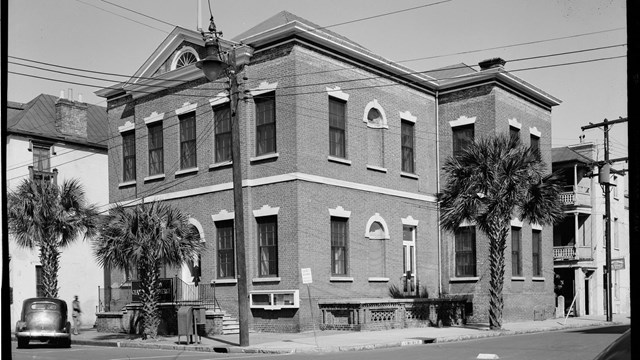
The Citizens and Southern National Bank of South Carolina is the second oldest building constructed as a bank in the United States.
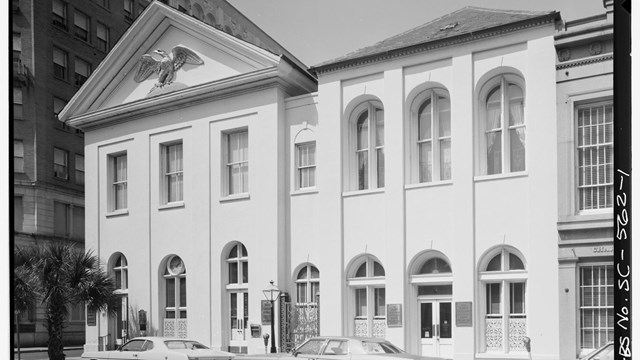
The South Carolina Bank of Charleston building has been in continuous use as a bank since it was constructed in 1817.
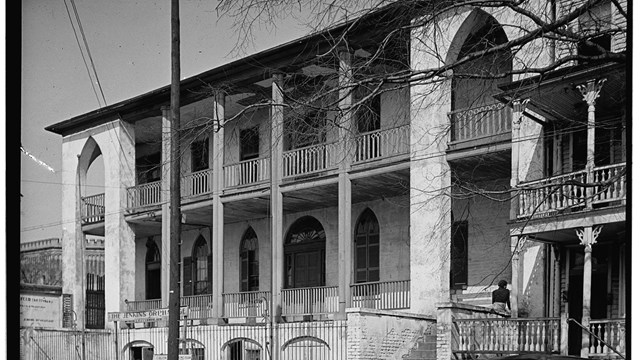
The Old Marine Hospital was designed by Robert Mills, who was often referred to as the first professionally trained American architect.

Organized in 1748, the Charleston Library Society is thought to be the third library established in the United States.
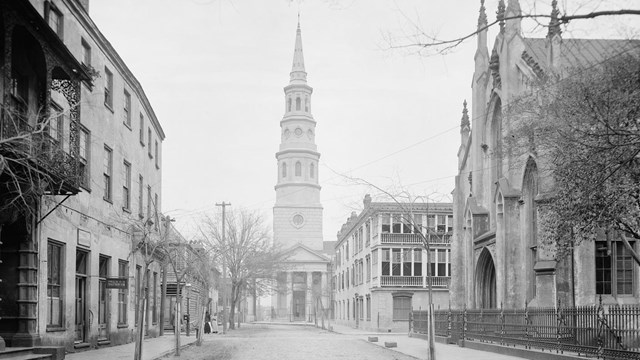
St. Philip's Episcopal Church houses the oldest congregation in South Carolina.
Last updated: September 18, 2018
